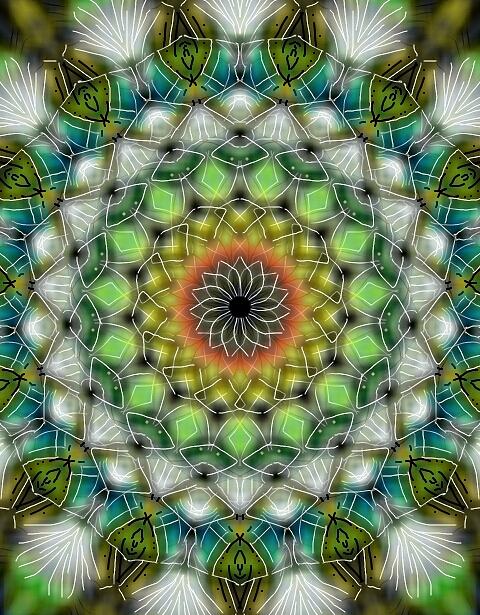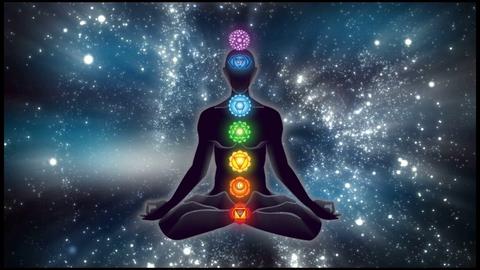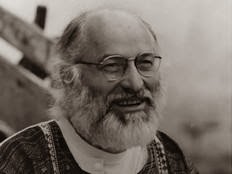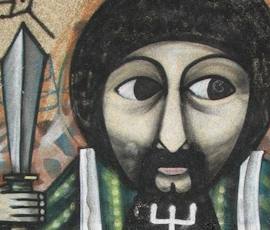
"Conscious joy in the world is the same as ecstasy in Samadhi" (Shivasutra)
Our life is not separated from Life. Our individual existence is part of the total Existence, inseparably connected.
There is in Hinduism a beautiful image that depicts the Creator, Brahma, attached with an umbilical cord to Vishnu. Vishnu in this case represents the One from which everything proceeds and not just the Conservative aspect of God. And we are also connected to the navel of the cosmos, because we are a vital expression of the entireness of life, dependent on the Source.
In one form of Zen meditation we focus on the navel, hara in Japanese, which is considered the meeting point of vital energy: ki. In Tantra, that point corresponds to the chakra in which the eternal fire burns, Manipura (solar plexus). According to other schools the base of connection with the infinite, of which we are the manifestation, is indicated in other areas or chakras: in the base of the spinal column, in the heart, in the pineal gland or on the top of the head (the fontanelle).
It does not matter its hypothetical "location" -that is only a descriptive convenience because how it can be "located" what everything contains? - what matters is that surely for each of us there is a "Core", a root that nourishes the our being. We may not be aware of it but the "Core" exists and is expressed in the form of Consciousness.
According to Abraham Maslow "self-realization" means becoming aware of this "Center".
To live far from one's "Center", which is the bridge that unites our individual existence with the Universal one, corresponds to the feeling of being separated, "thrown into this world" -using the words of Sartre. That is to say to be strangers and devoid of roots with existence. From this derives a condition of perennial restlessness, which we try to satisfy with desires and choices, but the result is only frustration, fear, uncertainty and struggle ... and it is a struggle that knows only defeat! In fact, how can one rebel or try to modify life when we ourselves are emanating from it?
Therefore, in lay spirituality, realization, integrity, "holiness" (if you prefer this term) is to reside in your own "Center". In letting go deep down to the roots of the ego.
It's difficult? It seems impossible?
In truth it is the simplest thing in this world, because - as stated by Ramana Maharshi - we can not do without being what we already are, just become aware of it: "Go down to the very roots of the I. Experience what you are deep inside ".
Paolo D'Arpini
Testo italiano:
“La gioia consapevole nel mondo è la stessa dell’estasi nel Samadhi” (Shivasutra)
La nostra vita non è separata dalla Vita. La nostra esistenza individuale è parte dell’Esistenza totale, inscindibilmente connesse, inseparabili.
C’è nell’induismo una bellissima immagine che raffigura il Creatore, Brahma, attaccato con un cordone ombelicale a Vishnu. Vishnu in questo caso raffigura l’Uno da cui tutto procede e non soltanto il Conservatore. Ed anche noi siamo collegati all’ombelico del cosmo, poiché siamo un’espressione vitale dell’interezza della vita, dipendenti dalla Sorgente.
In una forma di meditazione zen ci si concentra sull’ombelico, hara in giapponese, che viene considerato il punto d’incontro dell’energia vitale, ki. Nel Tantra quel punto corrisponde al chakra in cui brucia il fuoco eterno, Manipura (plesso solare). Secondo altre scuole la base di collegamento con l’infinito, di cui siamo la manifestazione, è indicato in altre aree o chakra: nella base della colonna spinale, nel cuore, nella ghiandola pineale o sulla sommità della testa (la fontanella).
Poco importa la sua ipotetica “ubicazione” –che è solo una convenienza descrittiva in quanto come può essere “ubicato” quello che tutto contiene?- ciò che conta è che sicuramente per ognuno di noi esiste un “Centro”, una radice che nutre il nostro essere. Possiamo non esserne consapevoli ma il “Centro” esiste e si esprime in forma di Coscienza.
Secondo Abraham Maslow “l’attuazione di sé” significa divenire consapevoli di questo “Centro”.
Vivere lontano dal proprio “Centro”, che è il ponte che unisce la nostra esistenza individuale con quella Universale, corrisponde al sentirsi separati, “gettati su questo mondo” –usando le parole di Sartre. Ovvero ritenersi estranei e privi di radici con l’esistenza. Da ciò deriva una condizione di perenne inquietudine, che cerchiamo di soddisfare con i desideri e le scelte, ma il risultato é solo frustrazione, paura, incertezza e lotta… ed è una lotta che conosce solo sconfitta! Infatti come ci si può ribellare o tentare di modificare la vita quando noi stessi siamo una sua emanazione?
Perciò, nella spiritualità laica, la realizzazione, l’integrità, la “santità” (se preferite questo termine) consiste nel risiedere nel proprio “Centro”. Nel lasciarsi andare in profondità sino alle radici dell’Io.
E’ difficile? Sembra impossibile?
In verità è la cosa più semplice di questo mondo, poiché –come affermava Ramana Maharshi- non possiamo fare a meno di essere quel che già siamo, basta divenirne consapevoli: “Scendete alle radici stesse dell’io. Sperimentate ciò che siete nel profondo”.
Paolo D’Arpini













